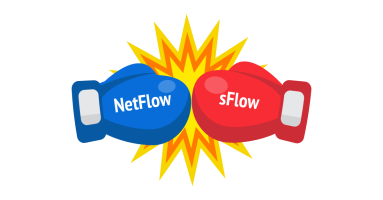Posts by Ken Osowski

























About Ken Osowski
Ken is a 25+ year networking industry veteran with a focus over the last 6 years on network traffic monitoring in service provider (mobile, cable and fixed) and enterprise networks. Ken’s first network monitoring marketing position was as Senior Director for Solutions Marketing of DPI products at Procera Networks (now Sandvine), then subsequently expanding his product marketing efforts and market coverage to include big data implemented network, application, and subscriber intelligence products. Ken has been an ongoing contributing columnist for various TMCnet publications including Internet Telephony Magazine, NetGen Mobility Magazine, and SIP Magazine. Ken has B.S. in Physics from Franklin & Marshall College and an M.S. in Computer Science from Columbia University School of Engineering.
In this post we look at the difference between NetFlow and sFlow and how network operators can support all of the flow protocols that their networks generate.
Managing quality of service and service-level agreement (SLAs) is becoming more complex for service providers. In this post, we look at how and why enterprise cloud services and application usage is driving service providers to rethink service assurance metrics. We also discuss why network-based analytics is critical to satisfying service assurance needs.
NetFlow offers a great way to preserve highly useful traffic analysis and troubleshooting details without needing to perform full packet capture. In this post, we look at how NetFlow monitoring solutions quickly evolved as commercialized product offerings and discuss how cloud and big data improve NetFlow analysis.
In this post, we look at the best practices for an effective capacity planning solution that ensures optimal network performance and visibility.
5G is marching towards commercialization. In this post, we look at the benefits and discuss why network monitoring for performance and security considerations are even more crucial to the operation of hybrid enterprise networks that incorporate 5G network segments.
Predictive analytics has improved over the past few years, benefiting from advances in AI and related fields. In this post, we look at how predictive analytics can be used to help network operations. We also dig into the limitations and how the accuracy of the predictions depends heavily on the quality the data collected.
College, university and K-12 networking and IT teams who manage and monitor campus networks are faced with big challenges today. In this post, we take a deeper look at the challenges and provide requirements for a cost-effective network monitoring solution.
IoT represents a massive threat to network infrastructure, as seen in widely publicized IoT-based DDoS attacks like Mirai. So what needs to happen to safeguard our devices and networks from participating in these botnet attacks? And how can IoT device originated attacks get quickly identified and stopped by network operators? In this post, we discuss scalable IoT DDoS protection.
As IoT adoption continues, enterprises are finding a massive increase in the number of devices and the data volumes generated by these devices on their networks. Here’s how enterprises can use network monitoring tools for enhanced visibility into complex networks.
Advances in open source software packages for big data have made Do-It-Yourself (DIY) approaches to Network Flow Analyzers attractive. However, careful analysis of all the pros and cons needs to be completed before jumping in. In this post, we look at the hidden pitfalls and costs of the DIY approach.









